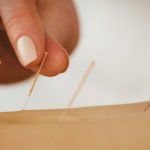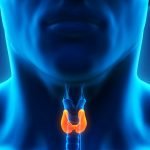Summary:
- Research suggests that the loss of muscle mass that often accompanies menopause may be avoidable with the intake of adequate levels of vitamin D.
- Vitamin D may help lower blood pressure, reduce the risk of diabetes, and boost your immune system. Supplementing with vitamin D significantly decreased the risk of respiratory infections in people deficient in this vitamin and lowered infection risk in those with adequate vitamin D levels.
- Good food sources of vitamin D include swordfish and salmon. Another great source of vitamin D is sunlight, which enables our bodies to produce the vitamin.
Research on Vitamin D and Muscle Mass
Going through menopause and its aftermath is no picnic. There are the symptoms few women escape such as hot flashes and mood swings. And don’t forget about all of the post-menopausal worries including an elevated risk of developing osteoporosis and cardiovascular disease. But in a bright spot on the menopausal horizon, there appears to be at least one issue we can safely and effectively prevent. Research suggests that the loss of muscle mass that often accompanies menopause may be avoidable with the intake of adequate levels of vitamin D.
The study, which took place at Botucatu Medical School at Sao Paulo State University in Brazil, found that consuming enough vitamin D may be able to reverse the muscle loss that most women typically experience after they go through menopause.1 Cangussu, LM; et al. “Effect of vitamin D supplementation alone on muscle function in postmenopausal women: a randomized, double-blind, placebo-controlled clinical trial.” Osteoporosis International. October 2015. Accessed 5 October 2015. http://www.ncbi.nlm.nih.gov/pubmed/25956283 The subjects were 160 women between the ages of 50 and 65 who had stopped menstruating a minimum of one year earlier. They were randomly divided into two groups. One group received a daily supplement of 1,000 IU of cholecalciferol, the form of vitamin D produced in your skin and found in better supplements as D3. The other group was provided a placebo that they too were instructed to take daily.
Those participants given vitamin D experienced a tremendous difference in their muscles. They had a 45 percent increase in muscle strength over the course of the nine months they were tracked. In contrast, the control group experienced a 23 percent loss in muscle strength in the same time frame. And those taking the vitamin D supplement were shown to have no loss of muscle mass, whereas their peers taking the placebo lost 6.8 percent of their muscle mass on average.
Vitamin D Protected Both Younger and Post-Menopausal Women
What’s more, the positive effects the scientists noted that were associated with increased vitamin D intake were not only found in the women who had recently gone through menopause. It was discovered that supplementation could prevent the loss of muscle mass in women who were as much as 12 years post-menopausal. And this is believed to be the first investigation to determine that vitamin D supplements on their own may provide protection for younger women as well.
Vitamin D for Heart Health, Diabetes, & Colds
The study was small, so replication of the results would be a valuable way to bolster the evidence in favor of vitamin D for a woman’s aging musculature. But in the meantime, it certainly can’t hurt to increase your intake of this vitamin. It’s been shown to be beneficial for lowering blood pressure, reducing the risk of diabetes, and even boosting survival rates from cancer.2 Li, Mian; et al. “The Impacts of Circulating 255-Hydroxyvitamin D Levels on Cancer Patient Outcomes: A Systematic Review and Meta-Analysis.” Journal of Clinical Endocrinology & Metabolism. 29 April 2014. Accessed 7 October 2015. http://press.endocrine.org/doi/abs/10.1210/jc.2013-4320
Vitamin D may also be essential to the health and functioning of your immune system. In a 2019 review of randomized control studies in 11,321 people, supplementing with vitamin D significantly decreased the risk of respiratory infections in people deficient in this vitamin and lowered infection risk in those with adequate vitamin D levels. And be sure to supplement with vitamin D3, not D2, as it offers significantly greater advantages to your health.
Vitamin D deficiencies are relatively common among all age groups, and they have been linked with health problems including multiple sclerosis and diabetes. It is important for all of us to get an adequate amount of this important vitamin on a daily basis, but perhaps it is even more vital as we age. Good food sources of vitamin D include swordfish and salmon. Another great source of vitamin D is sunlight, which enables our bodies to produce the vitamin. However, since most of us slather on the sunscreen for even a brief period outside, the necessary ultraviolet rays are blocked and cannot be absorbed by the skin. If you are going to be outdoors for 15 or 20 minutes, skip the sunscreen unless you are extremely fair skinned.
Vitamin D Recommended Doses
Taking a vitamin D supplement can also help ensure that you are receiving enough–recommended doses are usually in the 1,000 to 2,000 IU range–to benefit your body, especially if you aren’t in the sun regularly and don’t consume many foods rich in this vitamin. To learn more about vitamin D, check out Jon Barron’s newsletter called Vitamin D Nonsense.
References
| ↑1 | Cangussu, LM; et al. “Effect of vitamin D supplementation alone on muscle function in postmenopausal women: a randomized, double-blind, placebo-controlled clinical trial.” Osteoporosis International. October 2015. Accessed 5 October 2015. http://www.ncbi.nlm.nih.gov/pubmed/25956283 |
|---|---|
| ↑2 | Li, Mian; et al. “The Impacts of Circulating 255-Hydroxyvitamin D Levels on Cancer Patient Outcomes: A Systematic Review and Meta-Analysis.” Journal of Clinical Endocrinology & Metabolism. 29 April 2014. Accessed 7 October 2015. http://press.endocrine.org/doi/abs/10.1210/jc.2013-4320 |











